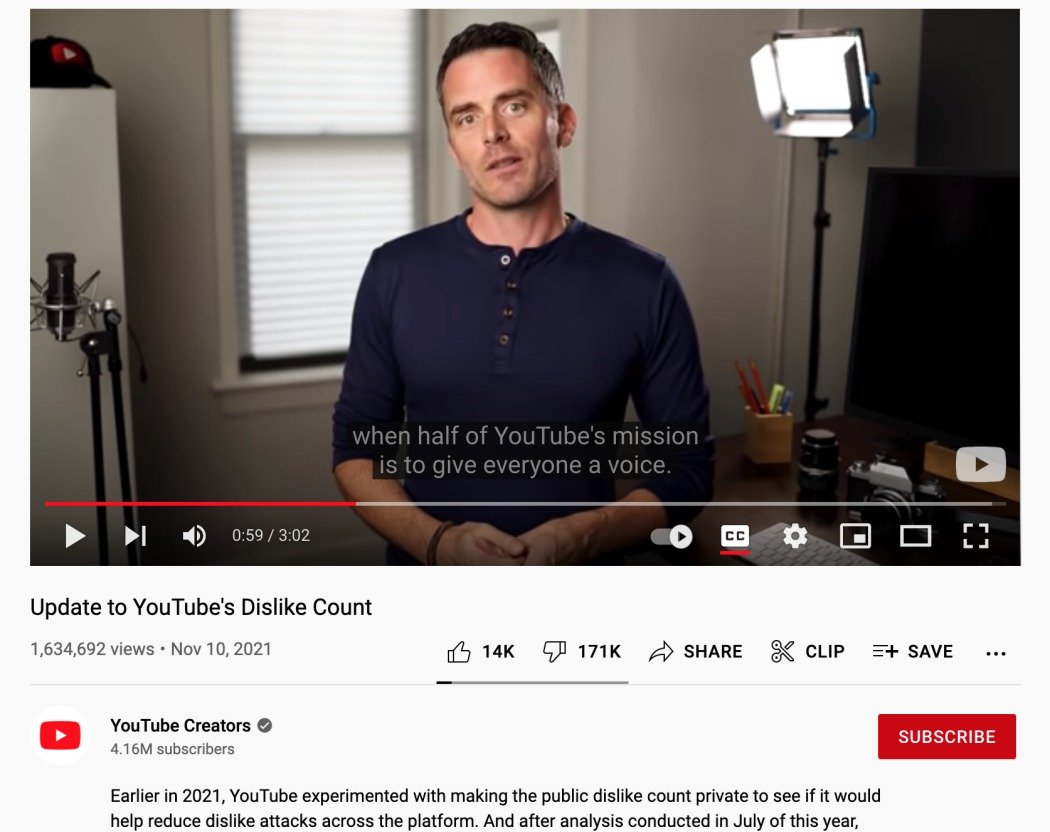YouTube recently announced its decision to hide public dislike counts on videos
YouTube co-founder doesn’t seem to be happy with its new plan.
YouTube recently revealed its decision to hide public dislike numbers on videos, but the company’s co-founder does not appear to be pleased with the new strategy. YouTube stated a few weeks ago that it will no longer provide hate counts on videos. This does not mean that users will not see or be able to use the dislike button; it simply means that the dislike count will not be visible to visitors. However, third co-founder Javed Karim believes that the new development could signal the end of YouTube.
“Why would YouTube make this universally disliked change? There is a reason, but it’s not a good one, and not one that will be publicly disclosed. The ability to easily and quickly identify bad content is an essential feature of a user-generated content platform. Why? Because not all user-generated content is good,” Karim edited the description of the first video ever uploaded to YouTube, a clip titled “Me at the zoo”.
Karam said that the ability to identify good content is an essential feature of a user-generated content platform.
YouTube has announced that it would remove public dislikes in order to reduce abuse and promote “respectful interactions between viewers and creators.” For the longest time, people have frequently used YouTube to carry out personal vendettas against celebrities or influencers. People from huge groups purposefully push the hate button in a video of someone they dislike.
“Earlier this year, we experimented with the dislike button to see whether changes could help better protect our creators from harassment, and reduce dislike attacks — where people work to drive up the number of dislikes on a creator’s videos. As part of this experiment, viewers could still see and use the dislike button. But because the count was not visible to them, we found that they were less likely to target a video’s dislike button to drive up the count. In short, our experiment data showed a reduction in dislike attacking behaviour,” YouTube blog read.





